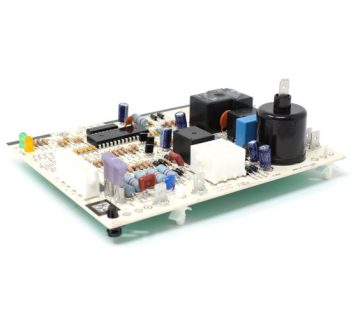Electronic control boards are essential components of various electronic devices, including appliances like refrigerators, washing machines, dishwashers, and more. These boards play a crucial role in controlling and coordinating the functions of these devices. However, like any electronic component, control boards can encounter issues from time to time. In this blog post, we will discuss some common problems that arise with electronic control boards and provide troubleshooting tips to help resolve them.
-
Power issues:
If your electronic device is not turning on, the first thing to check is its power supply. Ensure that the device is properly plugged into a working power outlet. If it is connected to a power strip or surge protector, make sure it is functioning correctly. Additionally, check if any fuses or circuit breakers related to the device have tripped. If everything appears to be in order, it could be a problem with the control board itself.
-
Display problems:
Many electronic devices have digital displays that provide information on settings, timers, and error codes. Sometimes, these displays may become blank or distorted. In such cases, check the connections between the control board and the display panel. Loose or damaged cables could be causing the issue. If the connections are secure, the control board might be faulty and require replacement.
-
Error codes:
Electronic control boards often display error codes when there is a problem with the device. Each error code corresponds to a specific issue, such as a sensor malfunction or a failed component. Refer to the device’s manual or the manufacturer’s website to interpret the error codes. Once you identify the problem, you can take appropriate steps to fix it, such as replacing a faulty sensor or performing a system reset.
-
Unresponsive controls:
If the buttons or controls on your electronic device do not respond, it could be due to a malfunctioning control board. Before determining that the control board is at fault, try a few troubleshooting steps. Turn off the device and unplug it from the power source. Wait for a few minutes, then plug it back in and turn it on. Sometimes, a temporary glitch can cause unresponsive controls, which a simple power cycle can fix. If the issue persists, it is likely a problem with the control board itself.
-
Overheating:
Overheating is a common issue with electronic control boards, especially in devices that generate a lot of heat, like ovens or refrigerators. If the control board is overheating, it can affect the device’s performance or even cause it to shut down. Check for any obstructions around the device that may be blocking ventilation. Clean the vents to ensure proper airflow and remove any dust or debris that might be accumulating around the control board. If the problem persists, you may need to replace the control board with one that has better heat dissipation capabilities.
-
Inconsistent temperature or settings:
If your electronic device is not maintaining the desired temperature or the settings are being reset randomly, it could be due to a faulty control board. Start by checking the device’s power supply and connections to rule out any external factors. If these are fine, the control board might need to be recalibrated or replaced. Consult the device’s manual or contact the manufacturer for specific instructions on recalibration or replacement.
-
Unusual noises:
Strange noises coming from electronic devices can indicate a problem with the control board or other components. Buzzing, clicking, or humming sounds could be signs of loose connections, faulty relays, or failing capacitors. Carefully inspect the control board for any signs of damage, such as burnt spots or swollen capacitors. If you spot any issues, it is advisable to seek professional help or contact the manufacturer’s support for guidance.
In conclusion, troubleshooting common issues with electronic control boards requires a systematic approach and careful observation. Start by checking the power supply and connections, and then proceed to analyze the specific symptoms or error codes displayed. With patience and the right tools, many control board problems can be resolved without the need for professional assistance. However, if you are unsure or uncomfortable, it is always best to seek help from an experienced technician or contact the manufacturer’s customer support.





No comment